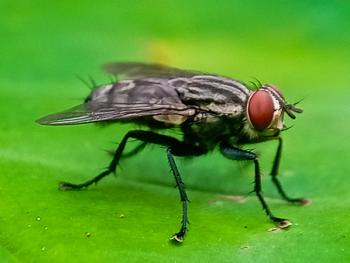
- dvm360 January 2020
- Volume 51
- Issue 1
An update on tick control from Michael Dryden at Fetch dvm360

Well-known veterinary parasitologist discusses West Coast species, product options.
Unlike fleas and heartworms, which are the same species wherever they're found, ticks are very regionally focused, says Michael Dryden, DVM, MS, PhD, who spoke at the
First up, Dr. Dryden discussed Ixodes pacificus, the West Coast counterpart to Ixodes scapularis, the infamous deer tick found throughout the Northeast and upper Midwest that transmits Borrelia burgdorferi, the Lyme disease bacteria that infects people and dogs. I. pacificus also can infect its host with Lyme disease, but there are some notable differences in the West Coast life cycle that Dr. Dryden highlighted.
First of all, I. pacificus feeds on a range of hosts. These hosts can include deer, but deer don't drive the tick life cycle like they do in the East. Also, on the West Coast, only 1% to 2% of adult I. pacificus ticks are found to have the Lyme disease pathogen, as opposed to 40% to 60% of I. scapularis adults in the East. Why is this?
In a word, lizards. “The larvae and nymphs of Ixodes love lizards,” Dr. Dryden said-particularly the western fence lizard and the southern alligator lizard. “Their blood kills Borrelia. If a larva feeds on a rat and gets Borrelia and then becomes a nymph, and the nymph feeds on a lizard, it no longer has Borrelia.”
Bottom line? “Yes, we have Lyme disease in California, but it will never be like it is in the Northeast and upper Midwest,” Dr. Dryden said. Anaplasma phagocytophilum is actually more of a risk from Ixodes ticks in the West, he said, “because lizard blood doesn't kill it.”
Dermacentor variablis, the American dog tick, is not a native West Coast tick, “but we brought it here,” Dr. Dryden said. It and its cousin, Dermacentor andersoni, found in elevations above 4,500 feet, both transmit Rocky Mountain spotted fever, tularemia and tick paralysis. Another Dermacentor species, occidentalis, is also a concern for Rocky Mountain spotted fever and can occur in “astronomical numbers” when it senses the skin oil of a host left on a blade of grass or shrub.
Rhipicephalus sanguineus, the brown dog tick, “loves dogs in all stages,” Dr. Dryden said. It inhabits buildings (unlike other tick species) and is showing surprising increases in population. It's responsible for a recent outbreak of Rocky Mountain spotted fever on western Indian reservations. “This tick is expanding in the southwestern U.S. and we don't know why,” Dr. Dryden said. “It's also the only tick where we're seeing acaricide resistance, including to permethrin.”
The goal of tick control products, Dr. Dryden said, is to kill what's attached currently and prevent new ticks from attaching. Topical acaricides include amitraz, fipronil, pyrethroids and combinations of the above. Fipronil is a good acaricide, he said-“as good as it ever has been”-but distribution over the animal can be an issue. The product spreads via hair-to-hair translocation prompted by the animal's grooming and other movements (not through skin lipid diffusion, contrary to popular belief). “You're never going to have uniform concentrations,” Dr. Dryden said.
The isoxazoline class of products appears to kill ticks more effectively than previous options, and the theory is that it's because they work systemically, so they provide consistent coverage over the whole animal, Dr. Dryden said. “These products can eliminate Rhipicephalus infestations when nothing did before,” he said.
They also prevent Borrelia, Anaplasma and Babesia infections by killing ticks before they've been attached long enough to transmit pathogens. There is no data on Rocky Mountain spotted fever, Dr. Dryden noted, while Ehrlichia is an area of concern since it can be transmitted in as little as three hours, Dr. Dryden said.
“Can we kill the tick before it transmits a pathogen? That's the key. Because we can't repel them all,” he said. “But the largest-selling class of pet product in the world is isoxazolines. And that doesn't happen unless they're performing well and found to be safe.”
Articles in this issue
about 5 years ago
New cancer screening test for dogs now availablealmost 6 years ago
The next recession is coming. Here’s what to do nowalmost 6 years ago
Women’s veterinary leadership group names new presidentalmost 6 years ago
A refuge from violence for pets and peoplealmost 6 years ago
Managing recurrent UTIs in petsalmost 6 years ago
A DVM at the DMValmost 6 years ago
Florida names new interim veterinary school deanalmost 6 years ago
The ABCs of veterinary dentistry: U is for ulcers—what a pain!almost 6 years ago
dvm360's top news stories of 2019almost 6 years ago
Production-based pay: Devils in the detailsNewsletter
From exam room tips to practice management insights, get trusted veterinary news delivered straight to your inbox—subscribe to dvm360.






